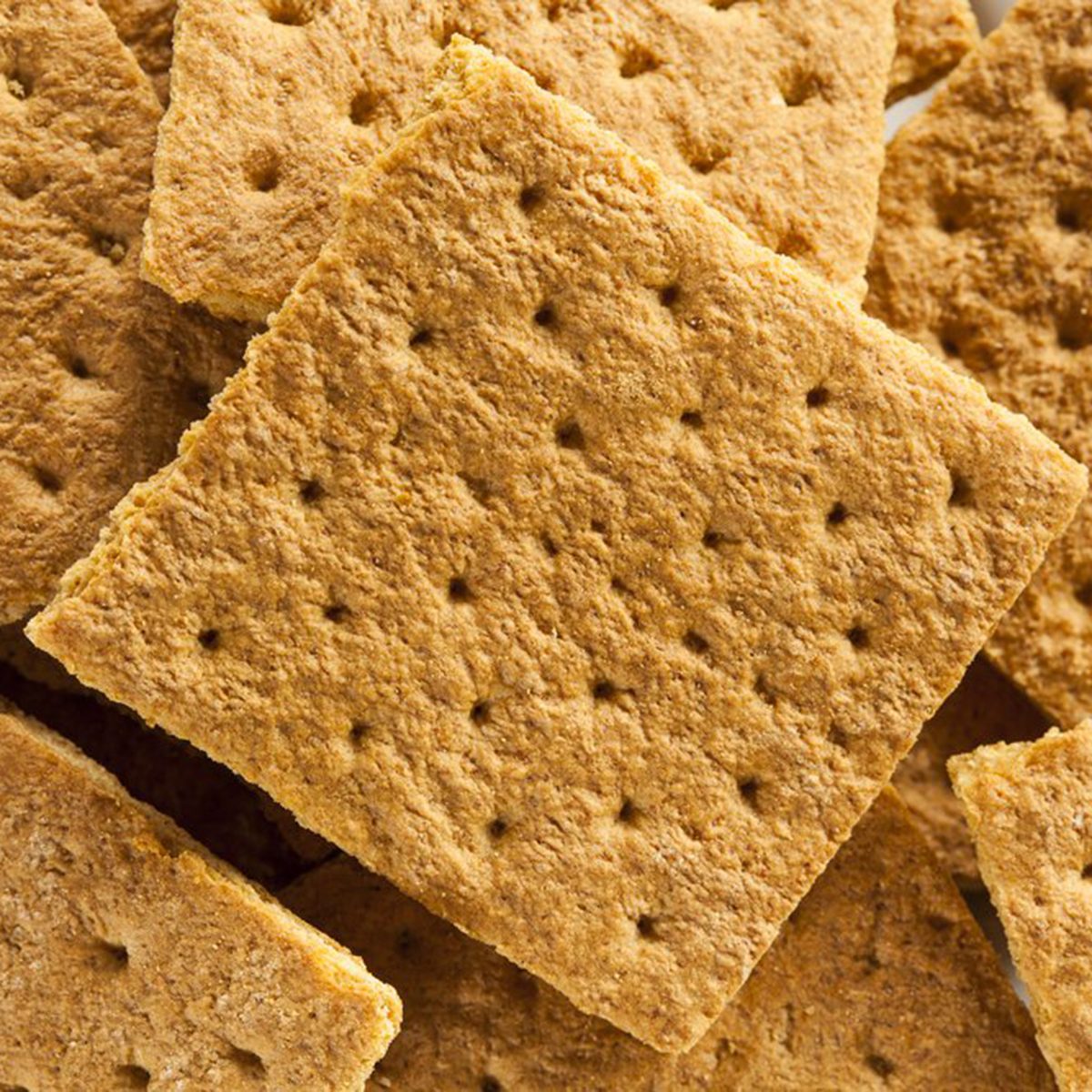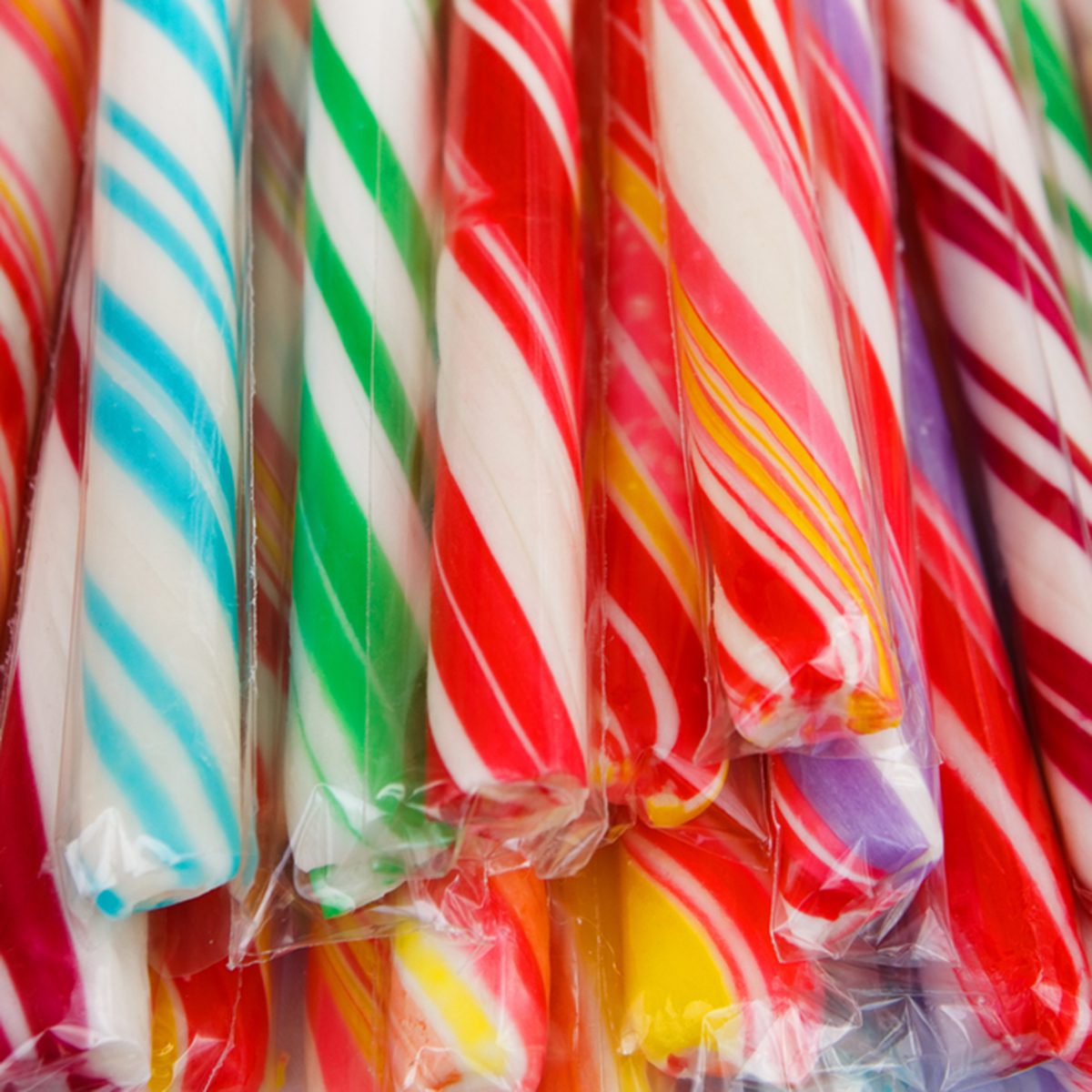
Quinoa
The shelf life of whole grains like quinoa and farro is largely dependent on their fat content. Heat, air and moisture are the top three enemies of whole grains because the elements can negatively affect their healthy oils, which in turn can cause your grains to go rancid sitting in your pantry. “Grains should always look and smell faintly sweet or have no aroma at all,” states the Whole Grains Council. “If you detect a musty or oily scent, the grains have passed their peak.” A good rule of thumb for freshness is to keep all grains in air-tight zipped bags or containers. Most will maintain their taste quality for up to six months. Quinoa typically lasts four months in the pantry and even longer when stored in the freezer—about eight months. On the other hand, you may want to think twice before you throw away these 11 foods too soon.

Turmeric
Your favorite ground spices like turmeric, paprika and nutmeg generally lose their potency after about two to three years. Eating old spices isn’t harmful to your health, but it won’t add any flavor to your recipes anymore. Do a quick sniff and taste test to determine if your spice is still fresh. If you can’t identify the flavor or scent, then toss it in the trash with these other foods you shouldn’t eat past the expiration date.

Baking powder
The same rules for ground spices apply to baking ingredients as well. Bags of baking powder and baking soda will lose their leavening power over time, which means a sad, flat cake for you. You can test their leavening power with this easy science experiment in your kitchen: mix baking soda with vinegar and baking powder with hot water. If they foam up and bubble, it means the ingredients are still fresh enough for baking.

Graham crackers
You should always place an opened bag of graham crackers in an air-tight container to prevent moisture from seeping in because no one likes to make s’mores with stale graham crackers. However, an unopened batch of graham crackers can still get stale in the bag they come in. According to foodsafety.gov, graham crackers will typically stay fresh in your pantry for up to nine months.

Nuts and seeds
One of the best snacks to chow down on in the middle of the day are nuts and seeds. But, you’ll want to eat the un-shelled ones like almonds and peanuts within a matter of a few weeks to a few months. “Nuts and seeds typically have a high amount of oil in them and that oil will start to go rancid after a couple of months in your pantry,” Tryg Siverson, chef and co-founder, COO and culinary director of Feel Good Foods, told INSIDER. Signs of rancidity on a nut or seed include a grassy or paint-like odor and dark or oily appearance. For optimal freshness and longevity, place the nuts and seeds in a clear freezer bag and pop them in your fridge for up to a year. Don’t forget to check out these 15 things you shouldn’t be putting down the garbage disposal.

Cereal
After three months, an opened box of cereal will go stale from air exposure, but a sealed box should last up to a year. Then again, the shelf-life can vary, especially if a cereal contains nuts, which are more prone to rancidity. When the fats in nuts are exposed to the elements of heat, light and air they start to oxidize. “That said, if you eat cereal with rancid nuts or oils, you’re at very little risk,” Jennifer Kaplan, a Liberal Arts instructor at the Culinary Institute of America in Napa Valley told TODAY Food. “The most common side effect will be an unpleasant taste.”

Candy
“If there are safety issues with candy, it’s usually a quality issue, not an issue of an expiration date,” Fadi Aramouni, PhD, member of the Food Science Institute told bestfoodfacts.org. “Generally, it is very difficult for candy to spoil, due to its low moisture content, but it depends on the candy.” Consult the National Confectioner Association for candy shelf-life guidelines. To ensure freshness, make sure you never mix candies like caramels that absorb moisture with harder candies such as fudge that lose moisture. Throwing these candies into a jar together will make the harder candies sticky. Always sprinkle harder candies with finely ground sugar and throw them separately into an air-tight jar to maintain their hard consistency. Check out these 8 foods you can safely eat past the expiration date.

Beer
Storing beer at room temperature isn’t necessarily bad for your beer, but it can spoil it faster. After around four months, heat, light and air can seep through the bottle caps. “Non-refrigerated storage accelerates aging and development of off flavors,” Cicerone Certification Program, an education service for beer experts, said in a statement to craftbeer.com. “Refrigerated storage is best for all beers at all times.”

Tea
Your tea bags should be consumed within a year because the oils in the tea will go old and give your morning cup of tea a bad flavor. The same goes for your coffee beans and grounds. Maples recommends consuming beans and grounds within two to four weeks. Instant coffee lovers have a bit more time—about two months. If you want a longer shelf-life for your coffee, store the grounds in the freezer instead of the refrigerator or pantry. Just make sure you don’t return them to the freezer once they’re taken out. If you’re shocked to discover that tea bags can lose their quality over time, check out the 12 other foods you never knew had an expiration date.

Brown sugar
An opened bag of brown sugar tends to dry up and harden from exposure to the air after four months in your pantry. Slip the brown sugar into a resealable plastic bag or air-tight container to keep it soft and last longer.

Canned vegetables
You may think that canned veggies can last a lifetime, but the longer they sit on your shelf, the more likely the can’s texture can break down and give your vegetables a metallic, tinny taste. For example, canned goods with a high acid content like pickles can last for 12 to 18 months, but canned vegetables with a low acid content like corn can last up to five years. But FoodSafety.gov states that canned items are typically safe to eat well past their “use-by” or “best-by” dates as long as they have no dents, rust or bulging. “Use a first-in, first-out rotation to use up older pantry items first,” Isabel Maples, MEd, RDN, a registered dietitian nutritionist based in Washington, D.C. and volunteer spokesperson for the Academy of Nutrition and Dietetics told INSIDER. “Inspect cans before using them; avoid bulging, cracked or leaking cans. And don’t taste the contents to see if they are safe—just throw them away.”

Olive oil
Light and heat are not olive oil’s friends. You shouldn’t get sick from an old bottle of olive oil, but an opened bottle of the stuff can taste a bit off after six months. If you don’t use olive oil often, only buy a small bottle so you can use it before the flavor spoils.

Whole grain flour
Most people store their flour in the pantry, but you should actually store it in the refrigerator or freezer to keep it fresh longer. Whole grain flour lasts up to eight months in the fridge and up to a year in the freezer. “Whole grain flours turn rancid before white flour does,” Maples said. “It doesn’t affect food safety but does affect food quality and taste.”

Potatoes
The spuds typically last up to two weeks in the refrigerator and two months in the pantry. You’ll know their time is up when they start growing sprouts and developing soft black spots on the skin. But bruised potatoes aren’t the only kitchen items you should finally throw out.

Brown rice
Although brown rice is a slightly healthier alternative to white rice, it doesn’t last nearly as long on your pantry shelf. “With brown rice, there is oil in its bran layer,” Siverson told INSIDER. “When that oil goes rancid, it gives brown rice a shorter shelf-life of about six months. You can store it in the freezer for up to a year.”

Garlic
The popular seasoning is best stored in a dark, cool pantry at a temperature of 60 degrees Fahrenheit for three to five months in mesh bags. “When stored for too long, the garlic cloves ay shrivel or begin to sprout,” according to University of California’s Agriculture and Natural Resources. “Neither is harmful, but both are an indication that the garlic is no longer at its peak quality.” But no worries, you can still use the sprouted garlic. Simply cut the clove in half and remove the green sprout and it’s ready to use! Now that you know which pantry items need to be retired, take a look at the 16 foods you shouldn’t store in your pantry.
The post 16 Pantry Items You’re Probably Keeping for Too Long appeared first on Taste of Home.
Ashley Lewis